In recent years, many libraries, such as Library@Orchard and Tampines Regional Library, have been getting hipster upgrades to appease audiences of all ages.
 Stylo bookshelves at Library@Orchard. Source.
Stylo bookshelves at Library@Orchard. Source.
From book displays that look like high-end art installations to in-house cooking lessons, many libraries are enhancing their facilities in an attempt to attract more visitors— particularly young people, who may prefer to stay at home, download books or do research online.
However, it wasn't always this way.
About 180 years ago, Singaporeans were so eager to have access to a library that they were willing to pay a princely sum of up to 40 Spanish dollars for a membership.
In fact, according to Biblioasia, Singapore's first public library dates all the way back to the time of Stamford Raffles in the early 1800s.
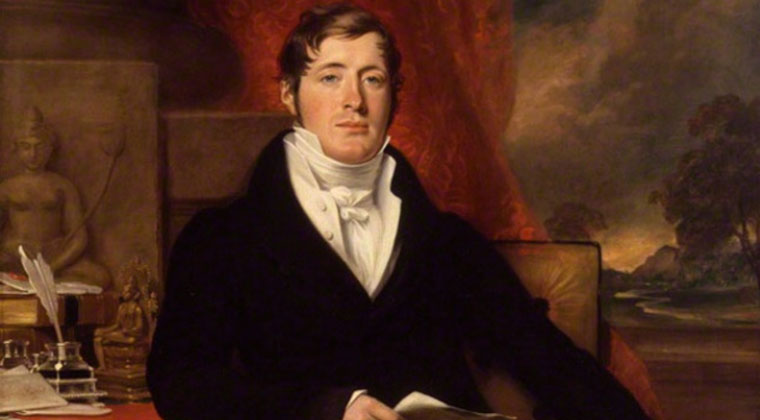 Raffles’ 1817 portrait by George Francis Joseph.
Raffles’ 1817 portrait by George Francis Joseph.
When Raffles first outlined his plans for the Singapore Institute, now known as Raffles Institution, in 1823, he envisioned a place where the children of local leaders would come to receive a higher education.
In addition, he wished to compile the nation's literature and traditions, so that important documents could be preserved and published.
Believing that a library would sufficiently fulfil this goal, along with supporting the educational aims of the institution, Raffles made plans for a library to be built within the school.
Construction of his grand vision began in 1823, and the Singapore Institution was completed in 1837. The library inside was made available to all students and staff that same year.
Robert Morrison, a missionary and philanthropist, became the school's first librarian. He would play a key role in the early development of the library.
 Robert Morrison. Source.
Robert Morrison. Source.
Though the library was primarily used by students and staff, the public could also access the library and borrow books for a fee of 25 cents per month. It gained popularity rapidly, and soon enough many were calling for the library to be opened after school hours.
Thus, on January 22, 1845, the facility— christened the Singapore Library— was established as the first subscription-based public library in Singapore.
Unlike today, however, this public library was not free to its patrons. At first, a 40 Spanish dollar membership fee was required, along with a monthly subscription of 2 Spanish dollars.
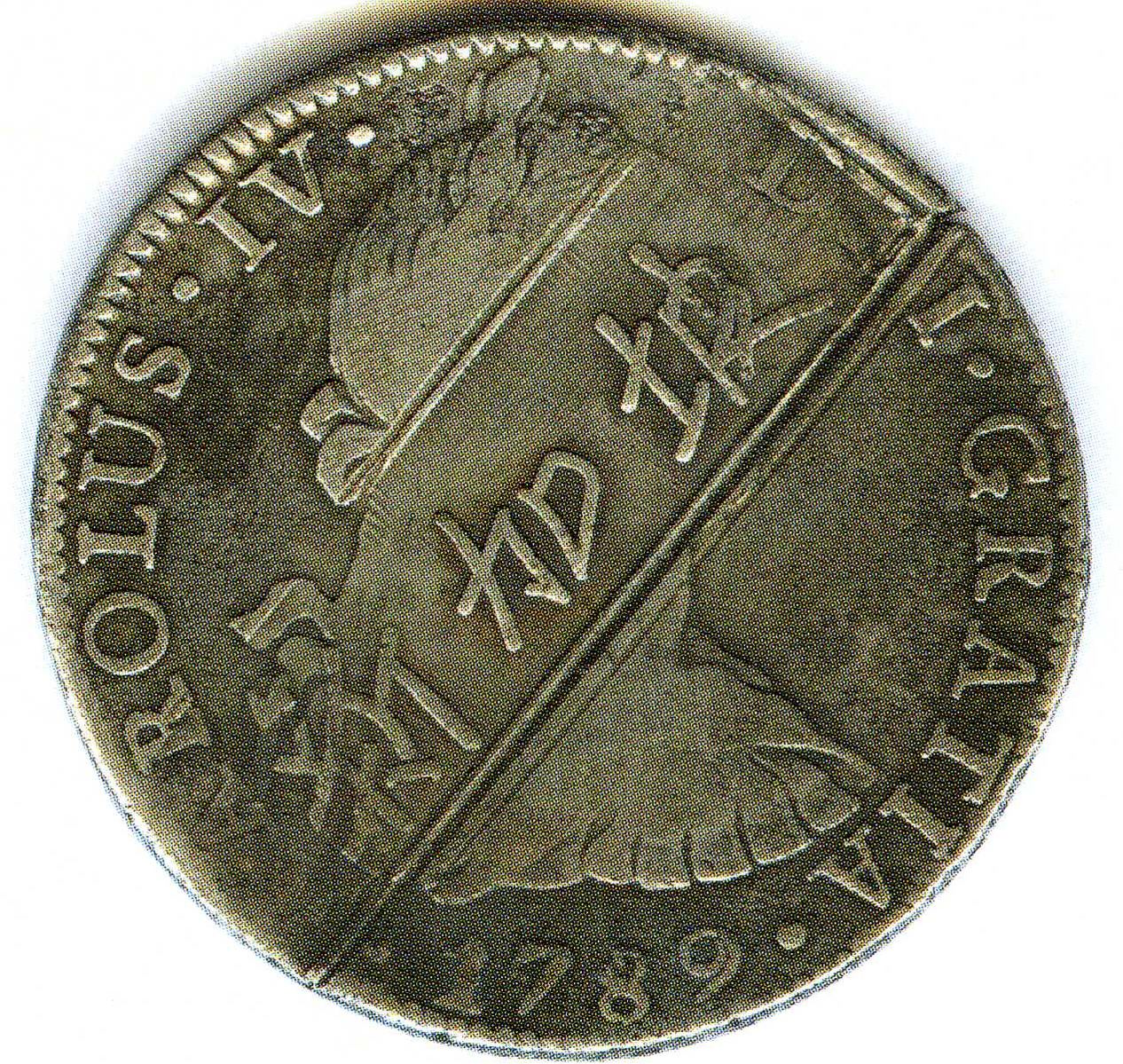 Singaporean Spanish dollar. Source.
Singaporean Spanish dollar. Source.
This was too expensive for many to afford, so two other membership categories were added in soon after — one for Singapore residents and one for visitors and temporary residents, both costing 2.50 Spanish dollars per month.
In 1848, a fourth and final category was added, with members paying only one Spanish dollar per month for a subscription to the library.
These categories would last until 1860, when only the first two memberships were retained, with fees for Singapore residents dropping to one Spanish dollar per month.
The library began to amass books, mostly by donation. Beginning with a humble 617 volumes in 1848, the collection grew to over 2,000 volumes by 1860.
Some of the titles included in the library's collections were Notices of the Indian Archipelago, Memoir of the Life and Public Services of Sir Thomas Stamford Raffles, and the entire collection of The Edinburgh Review. Many of these volumes are still with the National Library today.
[related_story]
Listings of these volumes were published in the annual Catalogue of Books of the Singapore Library, which even recorded the genres the library used to classify their books.
These genres were: Biography; Divinity, Ecclesiastical History, etc; General Literature; History, Voyages and Travels, etc; Novels, Tales, etc; and Poetry and Drama.
In 1849, however, the role of the Singapore Library began to evolve — it became a museum under the governance of William J. Butterworth, and a museum committee/curator position were created in preparation for the library's new role.
 Raffles Library and Museum, circa 1902. Source: National Library Board.
Raffles Library and Museum, circa 1902. Source: National Library Board.
On July 16, 1874, the library was officially renamed the Raffles Library and Museum. There were three sections of the facility— the Reference Library, the Lending Library and the Reading Room, all of which were used by many naval officers and visitors to Singapore. Few local Europeans, Eurasians and Chinese ever visited the library.
The library and museum remained a joint effort for the next 80 years, surviving even the Japanese Occupation.
Although many buildings in Singapore were damaged or decimated during that time, the library remained largely intact and only lost some 500 volumes.
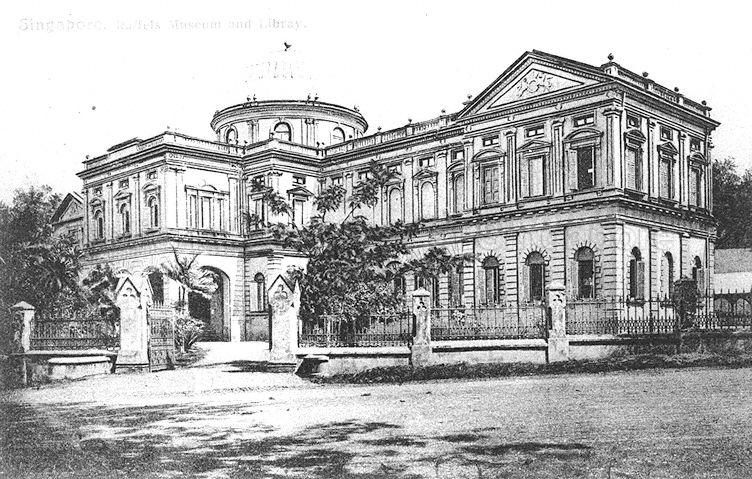 Postcard depicting the Raffles Museum and Library, circa 1900s. Source.
Postcard depicting the Raffles Museum and Library, circa 1900s. Source.
The library was reopened after the war, and in 1955, split with the museum to become the National Library.
The new name also came with a new building— the former Raffles Library and Museum became the National Museum, whilst the library was moved to a new building along Stamford Road. This building was four times larger than the former library, and known for its red-bricked exterior.
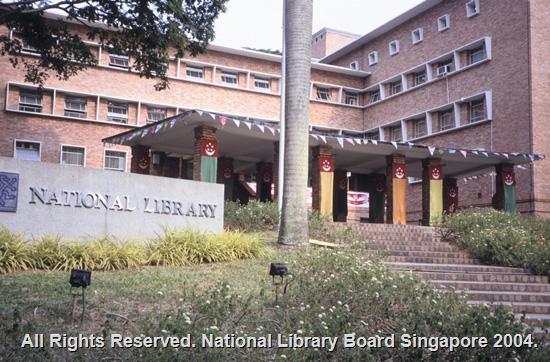 Old National Library Building. Source: National Library Board.
Old National Library Building. Source: National Library Board.
This building lasted until 2004, when it was demolished for urban redevelopment. The most recent National Library resides on Victoria Street, where it still continues to represent nearly 200 years of history and the Singaporean dedication to education.
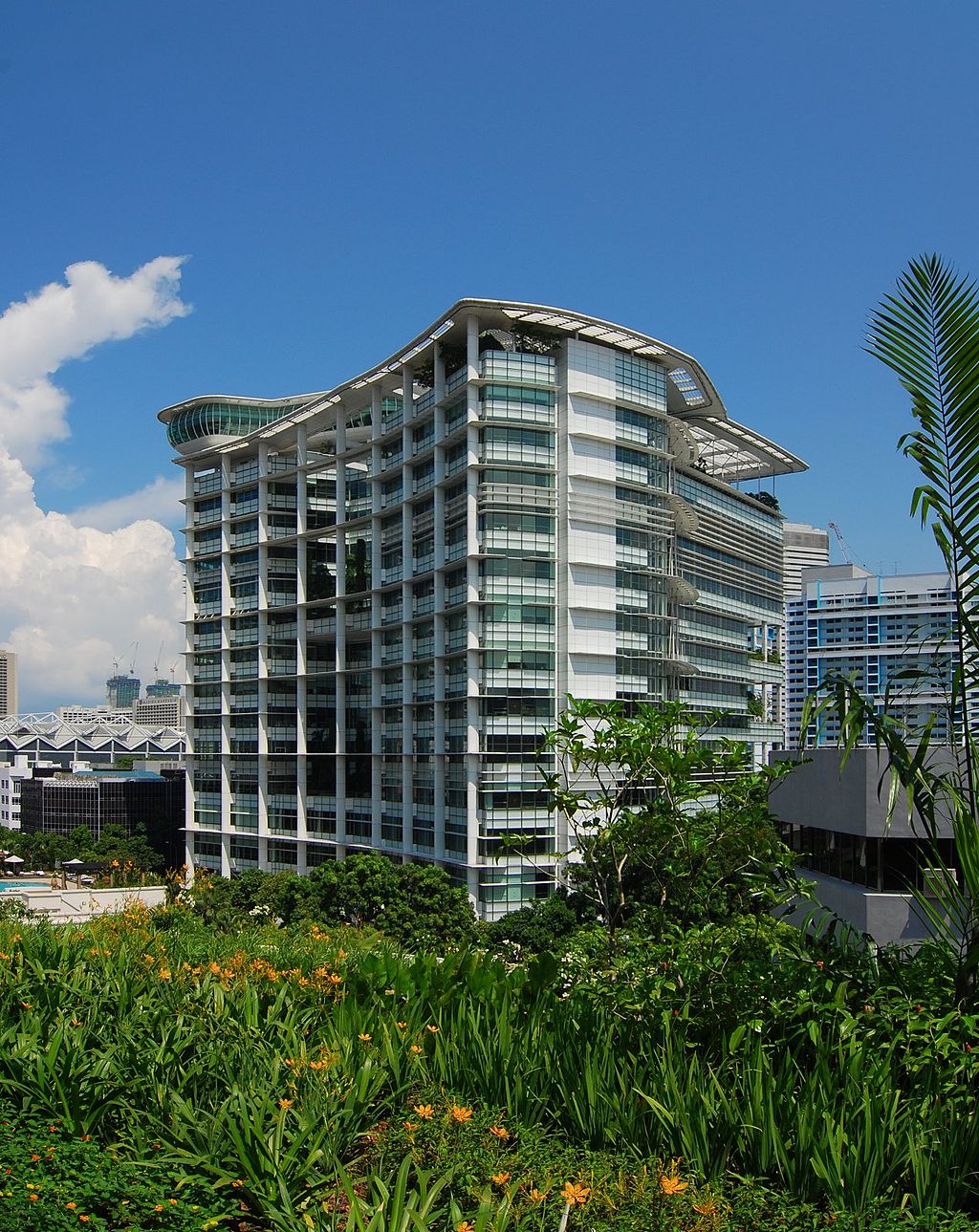 National Library on Victoria Street. Source.
National Library on Victoria Street. Source.
You can also read more about the Singapore's first public library from Biblioasia.
Here are totally unrelated but equally interesting articles:
This is cereals news: BreadTalk to launch new cereal floss bun, available for 8 days only
One of Us: Nothing to see here, it’s just a bowling alley supervisor turned kickass club DJ
Top image adapted from NAS, Pinterest, and Wikipedia.
1819 is a labour of love by Mothership.sg where we tell stories from Singapore’s history, heritage & culture. Follow us on Facebook, Instagram and Twitter!
[related_story]
If you like what you read, follow us on Facebook, Instagram, Twitter and Telegram to get the latest updates.
